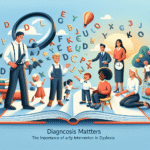
Introduction
In a world brimming with choices—from mundane daily decisions to life-altering career moves—effective decision-making is an essential skill. Yet, numerous studies reveal that decision-making is fraught with pitfalls that can lead to suboptimal outcomes. The ability to navigate these 10 common decision-making pitfalls and how to avoid them can significantly enhance your personal and professional life.
This article serves as your comprehensive guide to understanding these pitfalls and mastering the art of decision-making. By the end, you will not only recognize these traps but also deploy actionable strategies to evade them, setting the stage for success in every aspect of your life.
1. Overconfidence Bias
Understanding the Trap
Overconfidence bias occurs when individuals overestimate their knowledge or ability, leading them to make decisions without adequate consideration of the facts.
Case Study: Kodak’s Downfall
Kodak was once a titan in the photography industry, yet its leaders failed to adapt to the digital revolution due to overconfidence in their film-based business model. They underestimated the potential of digital photography, leading to a significant loss in market share and eventual bankruptcy.
How to Avoid It
- Seek Feedback: Regularly ask for input from peers or mentors to provide perspective on your decisions.
- Conduct Research: Stay informed and ground your decisions in data, not just intuition.
2. Anchoring Effect
Understanding the Trap
The anchoring effect refers to the tendency to rely heavily on the first piece of information encountered when making decisions.
Case Study: The Real Estate Market
Consider two similar properties with different price tags. If one is listed at $500,000 and the other at $300,000, potential buyers might anchor their opinions of value based on these figures, leading to skewed offers.
How to Avoid It
- Consider Multiple Perspectives: Deliberately seek alternative information and viewpoints to balance your anchoring.
- Delay Your Reaction: Take time to reassess your initial thoughts before making a final decision.
3. Confirmation Bias
Understanding the Trap
Confirmation bias leads us to seek out information that supports our existing beliefs while ignoring opposing evidence.
Case Study: The Tech Bubble
During the 1990s, many investors fell victim to confirmation bias, favoring information that supported their belief in the never-ending boom of technology stocks, ultimately leading to substantial losses when the bubble burst.
How to Avoid It
- Challenge Your Assumptions: Engage with contradictory viewpoints and data to ensure a balanced perspective.
- Establish a Devil’s Advocate: Create a role within your decision-making process that actively challenges prevailing opinions.
4. Decision Fatigue
Understanding the Trap
As we make more decisions throughout the day, our ability to make sound choices diminishes due to mental fatigue, often resulting in poor choices.
Case Study: High-Profile CEOs
Many successful CEOs, such as Barack Obama, have shared their practice of simplistically narrowing down daily decisions to conserve mental energy for important ones. Obama famously wore the same suit every day to minimize decision fatigue.
How to Avoid It
- Limit Choices: Reduce the number of decisions you’ll face in a day by streamlining routines.
- Prioritize Rest: Ensure you get adequate rest to maintain optimal decision-making capabilities.
5. Sunk Cost Fallacy
Understanding the Trap
The sunk cost fallacy occurs when individuals continue an endeavor due to previously invested resources (time, money, effort) rather than future benefits.
Case Study: Movie Productions
Many Hollywood studios pour additional funds into failing movie projects, driven by the money they’ve already spent, instead of evaluating future potential.
How to Avoid It
- Focus on Future Value: Regularly reassess investments based on future benefits rather than past expenditures.
- Establish Clear Criteria: Set benchmarks to evaluate whether to continue or abandon a project.
6. Groupthink
Understanding the Trap
Groupthink arises when a consensus is sought within a group at the expense of critical evaluation, often stifling innovation.
Case Study: NASA’s Challenger Disaster
The Challenger disaster was partly attributed to groupthink, as engineers and decision-makers ignored warnings and concerns about the shuttle’s safety, leading to catastrophic outcomes.
How to Avoid It
- Encourage Diversity of Thought: Actively invite dissenting opinions and diverse perspectives in group discussions.
- Create a Safe Space: Foster an environment where team members feel safe to voice their concerns and critiques.
7. Availability Heuristic
Understanding the Trap
The availability heuristic leaves us relying on immediate examples that come to mind when evaluating a situation, often skewing our perception of reality.
Case Study: Air Travel vs. Driving
Despite statistics showing that flying is safer than driving, many people fear flying more because plane crashes receive more media coverage. This brings an inflated perception of risk associated with air travel.
How to Avoid It
- Consult Data: Ground your decisions in comprehensive data rather than anecdotal experiences.
- Broaden Perspectives: Actively seek information beyond your immediate environment or recent memories.
8. Emotional Decision-Making
Understanding the Trap
Making decisions based on emotions rather than logic can lead to irrational choices, especially when under stress or excitement.
Case Study: Stock Market Reactions
Investors often make hurried decisions based on market emotions during economic downturns or booms, sometimes resulting in significant financial losses.
How to Avoid It
- Implement a Cooling-Off Period: Allow time for emotions to settle before making important decisions.
- Use Logical Frameworks: Lean on structured decision-making models that prioritize factual information.
9. Lack of Clarity and Goals
Understanding the Trap
Without clear goals, decision-making can become haphazard and lead to misaligned outcomes.
Case Study: Companies Without Vision
Numerous companies fail to thrive in competitive markets due to a lack of defined objectives. For example, without a growth plan, Blockbuster missed opportunities that led to the downfall against Netflix.
How to Avoid It
- Define Clear Objectives: Regularly establish and review your goals, ensuring each decision aligns with them.
- Utilize SMART Goals: Apply the SMART criteria—Specific, Measurable, Achievable, Relevant, Time-bound—for clarity.
10. Inertia and Procrastination
Understanding the Trap
Inertia refers to the tendency to stick with existing decisions or paths, while procrastination delays necessary decisions, leading to missed opportunities.
Case Study: The Nokia Example
Nokia’s stagnation in diversifying its smartphone offerings led to its downfall, as it failed to pivot in time, allowing competitors to capture significant market share.
How to Avoid It
- Set Deadlines: Establish clear timelines for decision-making to combat procrastination.
- Embrace Small Steps: Break down larger decisions into smaller, manageable actions to create momentum.
Conclusion
Navigating the 10 common decision-making pitfalls and how to avoid them is crucial for enhancing the quality of your decision-making. Each pitfall presents unique challenges, but being aware of them empowers you to make informed choices.
By combining self-awareness with structured strategies, you can rise above these common traps. Remember, effective decision-making is not just about avoiding mistakes; it’s also about seizing opportunities for growth and improvement. As you embark on your journey to smarter decisions, let every choice become a stepping stone toward success.
FAQs
1. How can I improve my decision-making skills effectively?
To enhance your decision-making skills, focus on practicing self-awareness, seeking diverse perspectives, and adopting structured frameworks for evaluation.
2. What role does gut feeling play in decision-making?
Gut feelings can provide valuable insights but should be balanced with data and factual analysis to ensure sound decisions.
3. How do I recognize when I’m falling into a decision-making pitfall?
Awareness is key. Regular reflections, seeking input from others, and being receptive to feedback can alert you to potential pitfalls.
4. Can emotional intelligence help in decision-making?
Absolutely! Emotional intelligence helps you understand and manage your emotions and the emotions of others, leading to better decision outcomes.
5. Is it possible to avoid all decision-making pitfalls?
While it’s challenging to avoid every pitfall, recognizing them and applying effective strategies can minimize their impact and greatly enhance your decision-making capabilities.
By understanding and applying these principles, you are better equipped to navigate the complexities of decision-making, ensuring that each choice brings you closer to your goals.

















